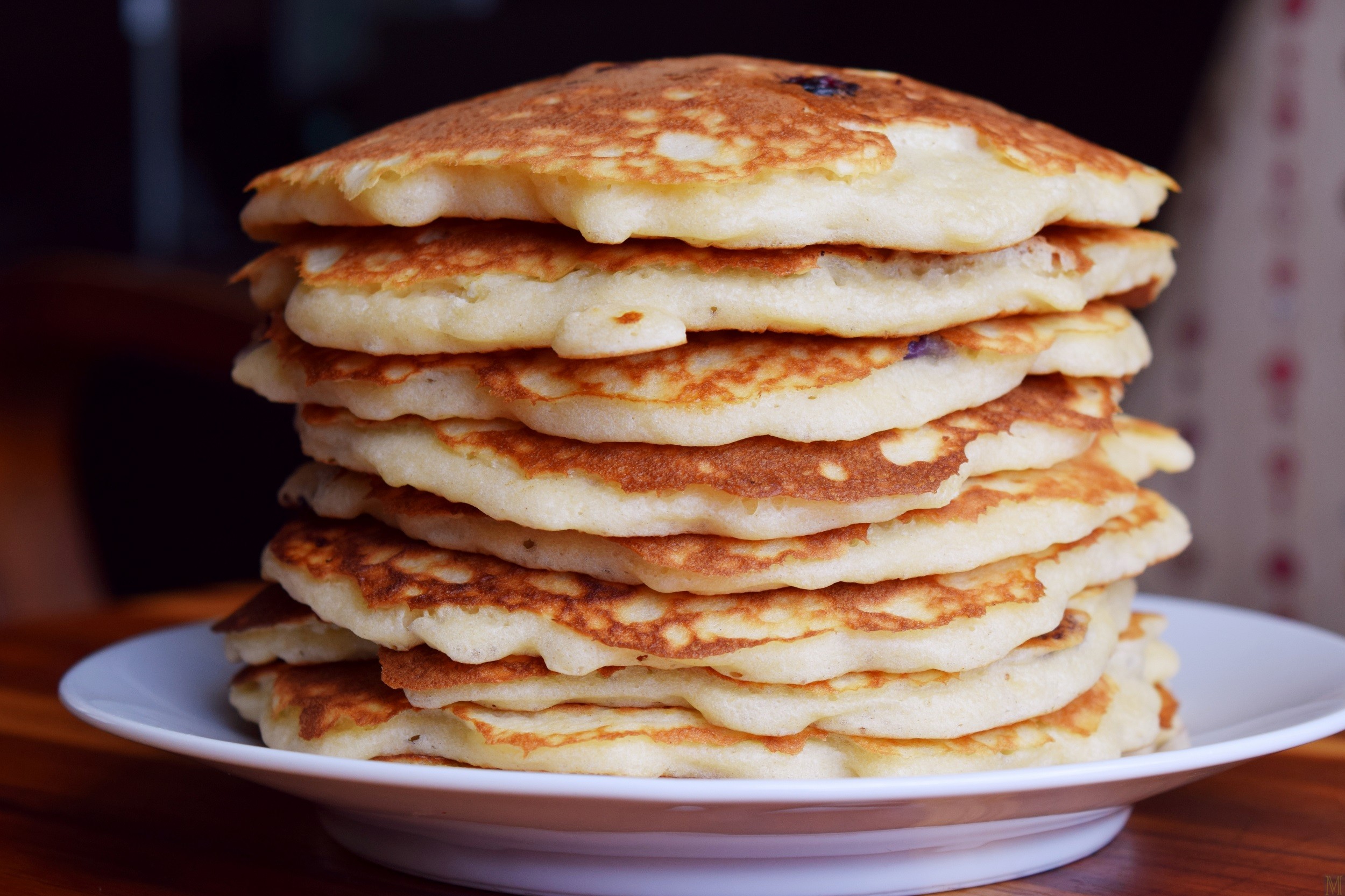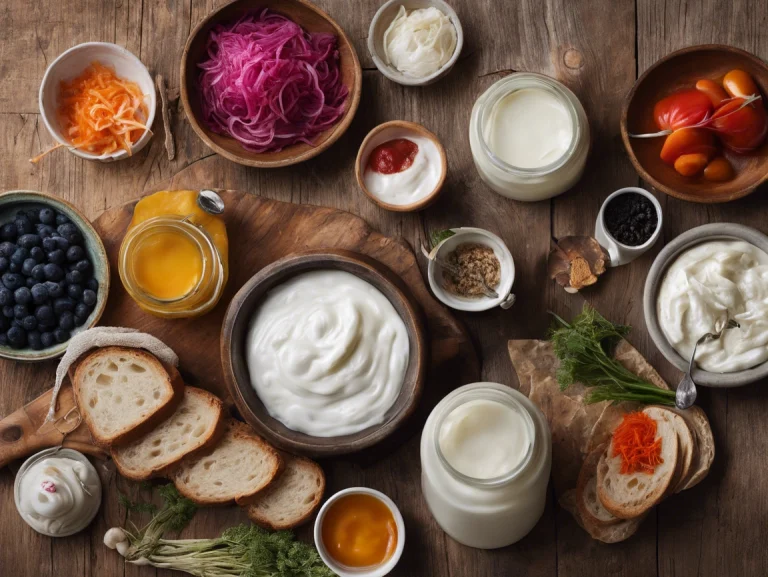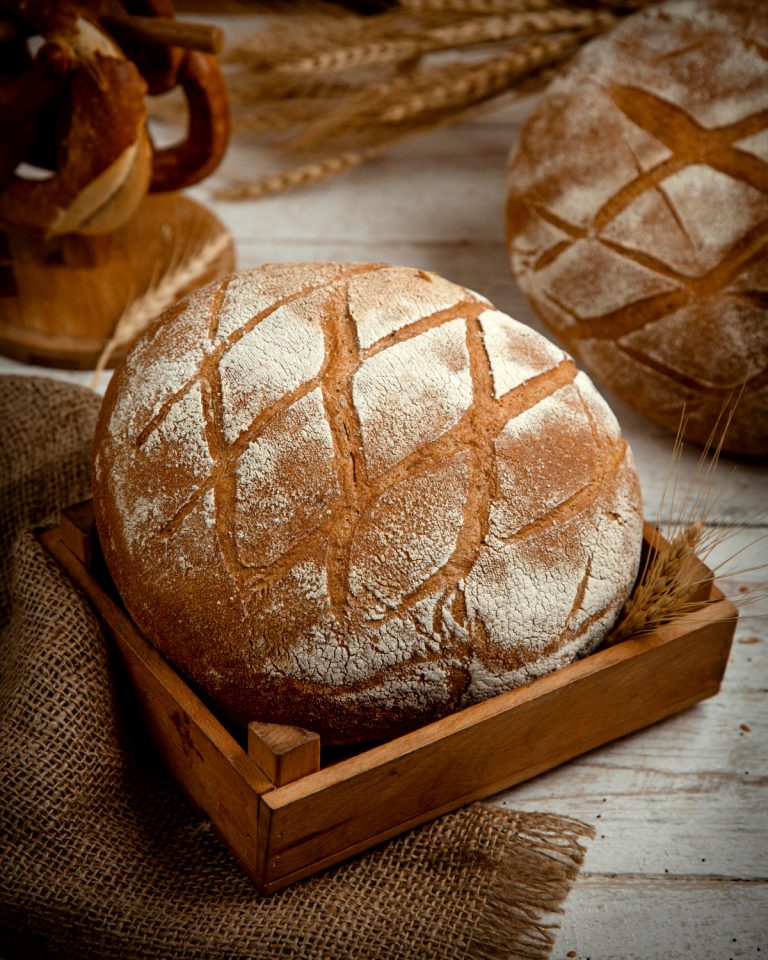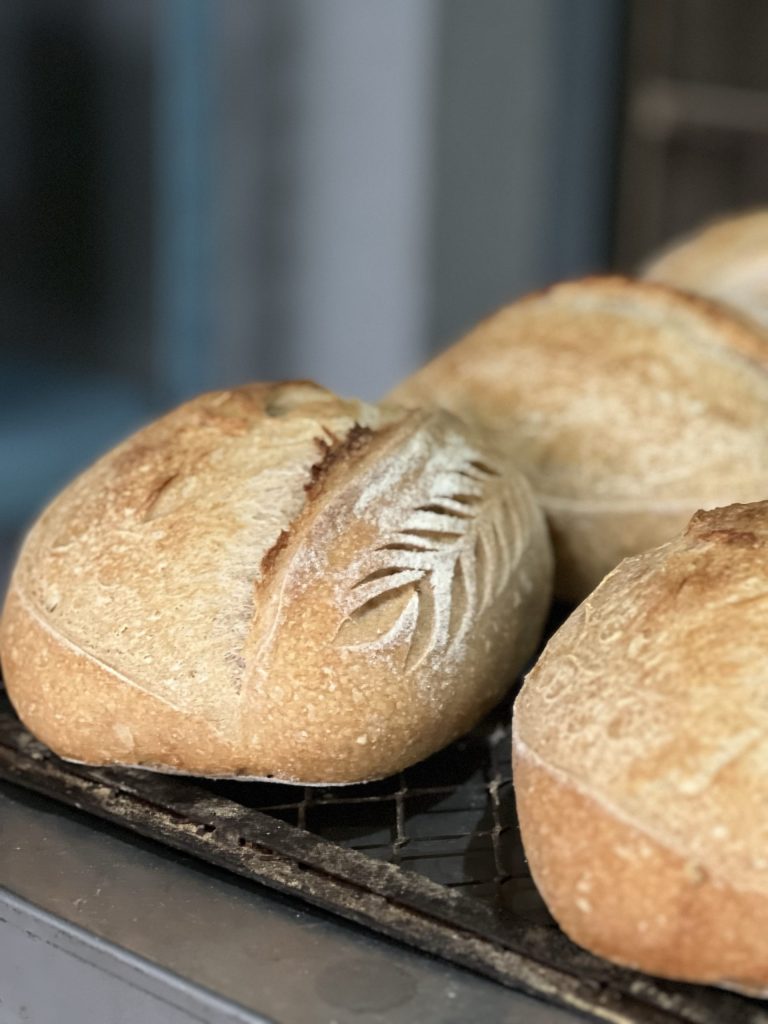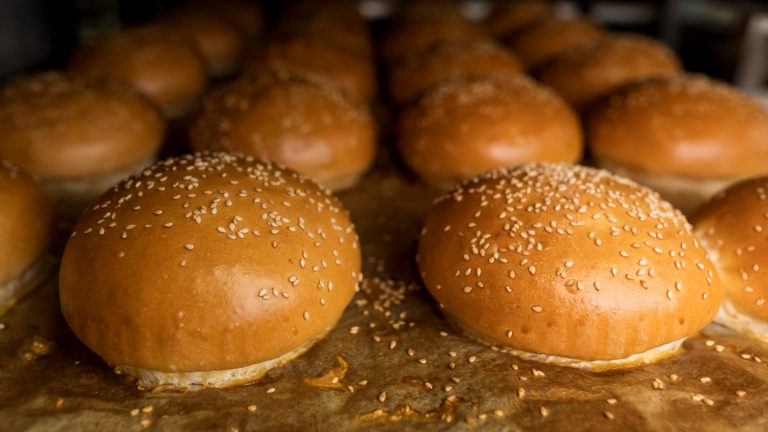10 Tips for Making the Fluffiest Sourdough Pancakes This Weekend
Sourdough pancakes blend traditional fermentation with breakfast comfort food perfectly. These light, airy creations have a delightful tangy flavor that makes them unique compared to regular pancakes. Natural fermentation and proper technique turn simple ingredients into exceptionally fluffy breakfast treats.
The perfect sourdough pancakes depend on understanding everything from starter maintenance to mixing methods properly. This piece covers the foundations of choosing between active starter and discard, finding the right flour combinations, and becoming skilled at cooking techniques. You’ll discover proven ways to achieve fluffy results consistently with overnight fermentation or quick-mix approaches that use sourdough discard.
The Perfect Sourdough Starter for Pancakes
Perfect sourdough pancakes depend on your starter’s quality. The starter’s characteristics shape your final results, and you can use either active starter or discard to achieve different outcomes.
Using active vs. discard starter
Active starter and discard choices substantially affect how pancakes turn out. Sourdough discard comes from the unfed portion you remove before feeding your main starter. This discard works perfectly for pancakes. The discard might not bubble as much as active starter, but it adds excellent flavor and you can use it directly from your refrigerator. Active starter creates more pronounced fermentation flavors and gives extra tang, though you don’t need it to make great pancakes.
Ideal starter consistency
A perfect pancake batter should have a thick, smooth consistency. These signs indicate you have achieved the right texture:
- The batter drips back gradually when you lift your spatula
- Your mixture feels slightly sticky to touch
- The consistency stays stretchy yet remains easy to pour
- Tiny bubbles appear throughout the mixture actively
Feeding your starter to get optimal results
Your starter needs regular feeding to stay healthy, but you can be flexible with the schedule if you plan to make pancakes. Refrigerated starters only need feeding every two weeks. Room-temperature starters require daily attention. The good news is that you can use your starter straight from the fridge to make pancakes without any special prep.
Storage tip: You can keep discard in your fridge up to two weeks, which makes spontaneous pancake-making easy. Small portions work well in the freezer too, though most people find the fridge more convenient.
Sourdough pancakes are incredibly versatile. You can use fresh active starter or discard – both work great. The batter is ready to use right away, or you can let it ferment overnight to boost the flavor. Adding baking powder or soda helps create fluffy pancakes, whatever your starter’s activity level might be.
Essential Ingredients for Fluffy Sourdough Pancakes
Perfect sourdough pancakes need the right ingredients combined in proper proportions. Each ingredient plays a significant role to create the pancakes’ signature fluffy texture that makes these breakfast treats irresistible.
Flour selection and ratios
Your choice of flour greatly affects texture and flavor both. All-purpose flour gives reliable results, but you can try these options:
- Whole wheat flour creates nutty, hearty pancakes
- Spelt flour yields a lighter, more delicate texture
- Buckwheat flour adds a distinctive flavor (works best in combinations)
- Rye flour produces soft results but less fluffiness
The best results come from using 1¼ cups flour to 1 cup of starter. You might want to begin with a 50/50 mix of whole grain and all-purpose flour. This helps you learn how each flour type behaves in your recipes.
Leavening agents: baking powder and baking soda
Maximum fluffiness comes from a perfect combination of baking powder and baking soda. These two leavening agents create magic together despite their different mechanisms. The sourdough starter’s natural acids activate the baking soda, and baking powder contributes extra lift through its double-acting properties. A batch requires 1 teaspoon each of baking powder and baking soda.
The role of eggs and milk
Eggs act as the structural backbone of sourdough pancakes and contribute to their texture and richness. They create a tender crumb and help bind ingredients together. Milk serves as a crucial liquid component that achieves the right consistency. The batter should be thick enough to hold its shape but still pourable, as with warm honey. Whole milk delivers the richest results, though both dairy and plant-based options work effectively.
You can adjust the ideal consistency by adding milk or flour one tablespoon at a time. Note that a thicker batter typically produces fluffier pancakes, while a thinner batter creates more delicate results.
Mastering the Mixing Technique
Sourdough pancakes texture depends on the technique used to combine ingredients. The mixing process is significant to achieve the coveted fluffy texture that makes these breakfast treats special.
Proper ingredient incorporation
Perfect sourdough pancakes depend on the mixing sequence. Mix all wet ingredients together first – sourdough starter, milk, eggs, and any melted fats. The dry ingredients should be mixed really well in another bowl. A gentle folding motion works better than vigorous stirring to combine the wet and dry mixtures.
Avoiding overmixing
The biggest problem most people face while making pancakes is overmixing. A perfect batter needs these key features:
- A slightly lumpy surface that shows small flour spots
- A consistency thick enough to create slow, stretchy ribbons
- Tiny bubbles that appear throughout the mixture after lifting with a spoon
- The right thickness to briefly maintain its shape in the pan
The batter needs minimal mixing after combining dry and wet ingredients. Stop mixing once the large flour patches disappear. Small lumps create the fluffiest texture, so they should stay in the batter.
Resting the batter for optimal texture
Many home cooks overlook the significant step of resting the batter. Quick morning pancakes need at least 15 minutes of rest time at room temperature. This brief pause lets the flour hydrate and gives the starter time to work with the fresh flour.
The overnight method creates better flavor and improves digestibility. Mix all ingredients except the leavening agents (baking powder and soda), cover the bowl, and refrigerate for up to 24 hours. The next morning, stir in the leavening agents right before cooking. This extended fermentation creates complex flavors and produces a lighter texture.
The batter should be thick but pourable. Small amounts of milk can adjust the consistency – add just one tablespoon at a time until you reach the right thickness. A thicker batter makes fluffier pancakes than a thin, runny mixture.
Cooking Methods for the Fluffiest Results
Making perfect sourdough pancakes concludes with the cooking process. The temperature control and timing determine the difference between good and exceptional results.
Ideal pan temperature
The right pan preparation and temperature control lead to great results. A cast iron skillet or griddle serves best and distributes heat evenly. The cooking surface needs preheating at medium heat before you add any fat. You’ll know the temperature is perfect when a water drop sizzles gently on the surface. Once cooking begins, switch to medium-low heat to cook food completely without burning it.
Flipping techniques
Becoming skilled at the single-flip technique is significant to achieve maximum fluffiness. These visual indicators signal when your pancake is ready to flip:
- Bubbles form and stay open on the surface
- Edges appear slightly darker than the center
- Edges look dry and start to set
- A gentle edge lift shows a golden-brown color
The pancake’s first side needs 2-3 minutes to cook. The second side requires just 1-2 minutes for perfect doneness. Note that multiple flips can deflate the pancakes and ruin their texture, so resist the urge to flip more than once.
Using butter vs. oil for cooking
Butter and oil each bring unique benefits to sourdough pancakes. Butter creates a rich, traditional flavor and leaves an attractive speckled pattern on the surface when its water content releases during cooking. Coconut oil makes the edges crispier and gives you a light, crispy exterior while the inside stays fluffy. You only need enough fat to lightly coat the cooking surface for each batch.
Your pancakes will turn out better when you add a fresh pat of butter or oil before making each one. This step will give a consistent cook and stop the batter from sticking. The surface should be hot enough to make the fat shimmer but not smoke – this shows the perfect temperature to get that ideal mix of crispy outside and fluffy inside that makes sourdough pancakes so delicious.
Conclusion
Making perfect sourdough pancakes just needs a few significant elements to work together. Your choice between active starter and discard, precise ingredient ratios, gentle mixing techniques, and proper temperature control are vital parts of getting that perfect fluffy texture. These basics create light, tangy, and irresistible breakfast treats that show natural fermentation’s true magic.
Sourdough’s possibilities go way beyond the reach and influence of pancakes. Home bakers ready to try traditional fermentation methods have endless options. Bakers wanting to continue their sourdough trip can raise their bread and pizza skills with an authentic artisanal sourdough starter from The Yeast We Can Do. Premium starter for exceptional bread and pizza with perfect tangy flavor and signature crust is available – email john@theyeastwecando.com. Quality ingredients and proper techniques help home bakers create breakfast masterpieces that blend traditional fermentation with modern cooking methods consistently.
FAQs
What are the secrets to achieving fluffy pancakes?
To make your pancakes fluffier, consider these tips from the Bob’s Red Mill Team: Allow your batter to rest before cooking, beat the egg whites separately before folding them into the batter, avoid overmixing, wait for bubbles to form on the surface before flipping, and always use a reliable recipe.
What ingredient causes pancakes to rise and become fluffy?
The fluffiness of pancakes is primarily due to the presence of baking soda. When baking soda mixes with wet ingredients that include an acid (like buttermilk), it produces carbon dioxide gas bubbles. These bubbles help the batter rise and create a fluffy texture.
How can I ensure my pancakes remain fluffy?
For the fluffiest pancakes, use fresh leavening agents, opt for cake flour instead of all-purpose flour, sift your dry ingredients, add carbonated water, incorporate mayonnaise into the batter, mix gently with a balloon whisk, and be careful not to overmix the batter.
Why might my sourdough pancakes turn out flat?
Flat sourdough pancakes are often the result of inactive baking soda or baking powder. If these leaveners have been stored for more than six months, test their activity by mixing ¼ teaspoon with a small amount of vinegar to see if they fizz.
